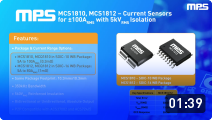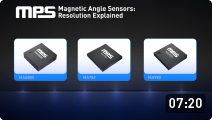Environmental Challenges
The deployment of sensors in real-world applications often means confronting an array of environmental challenges. The sensor's environment can vary from the serene conditions of a laboratory to the harsh realities of outdoor or industrial settings. Recognizing and preparing for these environmental conditions is pivotal for ensuring accurate and consistent sensor performance.
Dealing with Extreme Temperatures
Material Impact: Extreme temperatures can affect the materials from which the sensor is made. For instance, metals can expand or contract significantly with temperature changes, potentially altering a sensor's mechanical properties or its calibration.
Electronic Impact: Electronic components within sensors can be sensitive to temperature changes. For instance, a temperature rise might lead to increased resistance in some materials, potentially affecting the sensor's readings.
Solutions: Engineers often employ temperature compensation techniques to correct for these changes. Additionally, selecting components that are rated for extended temperature ranges can mitigate the effects of temperature extremes.
Addressing Moisture Concerns
Corrosion: Prolonged exposure to moisture – for example in marine environments – can lead to corrosion, especially for sensors made from metals prone to oxidation.
Electrical Conductivity: Water is a conductor, and even a slight amount of moisture can create short circuits or erroneous readings in a sensor.
Protective Measures: To counteract moisture, sensors might be sealed in waterproof casings. Desiccants can be used to keep internal air dry, and hydrophobic coatings might be applied to prevent water from making contact with sensitive parts.
Other Environmental Factors
Dust and Debris: In many environments, especially industrial or outdoor ones, sensors can be exposed to dust and other particulates. These can accumulate and interfere with sensor operation, particularly for optical or capacitive sensors.
Vibration and Mechanical Stress: In settings like manufacturing plants and vehicles, sensors can be subjected to significant vibrations or mechanical stresses that can affect their readings or longevity.
Addressing the Challenges: Enclosures can protect sensors from dust and debris. For vibrations, shock-absorbing mounts or materials can be employed. Selecting robust sensor designs that can withstand mechanical stress ensures a longer operational life.
The environment in which a sensor operates plays a decisive role in its performance and longevity. By understanding potential challenges and designing with these in mind, engineers can ensure that sensors provide reliable and accurate data regardless of where they are deployed. Continued research into robust materials and innovative design solutions will further enhance the resilience of sensors in challenging environments.
Scalability in Sensor Systems
Scalability is a critical challenge in the deployment of sensor systems, particularly as the scope of applications broadens from small, localized setups to large-scale, distributed networks. This expansion can encompass a wide range of environments, from industrial facilities to city-wide infrastructure, and poses several unique challenges:
System Architecture: As the number of sensors in a network increases, the underlying architecture must be capable of handling increased data traffic and processing needs. This might involve transitioning from simple, direct sensor-to-controller communication to more complex, multi-node networks.
Data Management and Analysis: Larger sensor networks generate vast amounts of data. Efficiently managing, storing, and analyzing this data requires robust databases and sophisticated analysis tools, often incorporating cloud computing and AI technologies.
Energy Management: In large-scale deployments, especially in remote or distributed environments, ensuring consistent power supply to all sensors can be challenging. Solutions like energy harvesting, low-power design, and efficient power management protocols become essential.
Communication Protocols: Scalability often requires flexible and scalable communication protocols that can support an increasing number of devices without significant loss of performance. Protocols must be chosen based on range, data rate, power consumption, and the ability to handle network complexities such as node addition or removal.
Maintenance and Upkeep: As the size of a sensor network increases, maintaining the entire system efficiently becomes more challenging. This includes regular calibration, firmware updates, and hardware repairs or replacements. Automated diagnostic tools and remote maintenance capabilities can help manage these tasks more effectively.
Integration and Compatibility: Scalable sensor systems must be compatible with various types of devices and platforms, especially in IoT applications. This requires standardization in communication protocols and data formats to ensure seamless integration and interoperability between different systems and components.
Cost Considerations: Expanding a sensor network involves not only the direct costs of additional hardware but also indirect costs related to installation, integration, and long-term operation. Balancing performance with cost-effectiveness is crucial in achieving a scalable and sustainable sensor deployment.
Security and Privacy: With the expansion of sensor networks, particularly in public or semi-public spaces, concerns around data security and user privacy escalate. Implementing robust encryption methods and secure data handling procedures is essential to protect against unauthorized access and data breaches.
Calibration and Maintenance
As sensors become integral to various applications, ensuring their accurate and consistent performance is paramount. This calls for periodic calibration and routine maintenance to guarantee they operate within specified tolerances. The dynamic environments where sensors operate can sometimes compromise their stability and reliability, emphasizing the need for meticulous calibration and maintenance processes.
Periodic Calibration Needs
Drift Over Time: All sensors tend to drift over time, meaning their readings might deviate from the true value even if the conditions remain constant. This drift can be attributed to various factors such as component aging, environmental effects, or mechanical wear.
Calibration Methods: Calibration involves comparing the output of a sensor to a known reference value and adjusting the sensor's response accordingly. This can be done using reference materials, benchmarks, or equipment known to produce precise and accurate readings.
Calibration Intervals: The frequency of calibration depends on the sensor's application, stability, and importance of the data. Critical applications, such as those in medical or aerospace sectors, might require more frequent calibrations compared to others.
Long-term Stability and Reliability Considerations
Stability Metrics: Stability can be quantified by looking at a sensor's drift over a specified period. The lesser the drift, the more stable the sensor.
Factors Affecting Stability: Apart from environmental factors, stability can be affected by power fluctuations, mechanical stresses, and even software or firmware anomalies.
Enhancing Reliability: Implementing redundancy by deploying multiple sensors, using high-quality components, and selecting designs that are inherently stable can boost reliability. Regular diagnostics and predictive maintenance, enabled by analytics, can further improve long-term reliability.
Maintenance Procedures
Routine Checks: Regular inspections can identify visible damages, wear, or component degradations before they affect the sensor's performance.
Cleaning: Accumulated debris or contaminants can hinder sensor functionality. Hence, periodic cleaning, especially for optical sensors, is crucial.
Firmware and Software Updates: Just like hardware, the software driving a sensor needs periodic updates to fix bugs, enhance performance, or add new features.
Replacement of Components: Some sensor components have a finite lifespan. Being proactive in replacing such components before they fail can ensure uninterrupted sensor operation.
Calibration and maintenance are foundational to the trustworthiness of sensor data. Given the diverse environments and applications sensors cater to, a well-structured calibration regime combined with proactive maintenance can ensure they remain reliable and accurate throughout their operational life. Engaging in such practices not only prolongs the sensor's life but also safeguards the systems and processes dependent on them.
Safety and Fail-Safes
Sensors play a pivotal role in many applications, ranging from consumer electronics to critical infrastructures like nuclear reactors and medical equipment. In many of these applications, sensor malfunction can have severe consequences, emphasizing the need for robust safety mechanisms and fail-safes.
Ensuring Sensors Function Reliably
Redundancy: One of the primary strategies to ensure reliability is the use of redundant sensors. By having multiple sensors monitor the same parameter, a system can cross-reference the data. If one sensor fails or provides anomalous data, others can fill in, ensuring consistent monitoring.
Self-Diagnostics: Modern sensors often come equipped with self-check routines that run periodically to verify the sensor's health and performance. If a malfunction or degradation is detected, these routines can trigger alerts for maintenance or even switch the sensor offline to prevent erroneous readings.
Continuous Monitoring: Employing continuous monitoring systems can track a sensor's performance in real-time, identifying any deviations or erratic behaviors, thus offering an additional layer of reliability.
Designing for Safety in Critical Applications
Fail-Safe Design: In scenarios where a sensor failure could lead to catastrophic consequences, it's essential to design the system such that failure leads to a safe state. For instance, a temperature sensor failure in a reactor might default to shutting the system down.
Safety Margins: Keeping operational parameters within a conservative range ensures that even if a sensor momentarily fails or lags, the system won't immediately enter a dangerous state.
Isolation: For critically sensitive applications, sensors can be isolated from the main system, ensuring that a malfunction or external attack on the sensor doesn't compromise the larger system's integrity.
Emergency Protocols: Beyond just the sensor design, having clear and well-practiced emergency protocols can mitigate risks. Training personnel to recognize and respond to sensor failures ensures that human intervention can act as a backup to technological fail-safes.
Regulatory and Industry Standards
Many industries have stringent standards and regulations around sensor safety, especially in high-risk areas like aerospace, automotive, or healthcare. Adhering to these standards not only ensures safety but can also be a legal requirement.
The safety considerations surrounding sensors highlight their significance in today's technological landscape. While sensors provide invaluable data and enable automation, it's crucial to ensure that their potential failure doesn't jeopardize the systems or people depending on them. Through strategic design, regular maintenance, and the implementation of fail-safes, engineers can harness the power of sensors while ensuring safety and reliability.








直接登录
创建新帐号